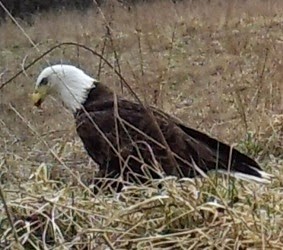On the Bull Mills botany field trip last Saturday, led by Justin Thomas* someone noticed some tiny spots on the underside of buckeye leaves on one tree. With a hand lens we could make out tiny winged insects but no further details. Occasional buckeyes along the drive had similar infestations although there was not apparent damage to the leaves at present.
I showed enlarged macro photographs to Dr. Chris Barnhart who identified them as lace bugs. I began thumbing through page after page of lace bug pictures in Bugguide.net - there are over 2,000 species world wide - with no luck. Finally in a moment of biological brilliance, I Googled "buckeye lace bug" and immediately found identical pictures of our insect ... a "buckeye lace bug." Who knew!?
Lace bugs are tiny insects (2–10 millimetres or 0.08–0.39 inches) in the family Tingidae. They are Hemiptera, defined by their specialized mouth parts used for sucking out plant juices. Our buckeye lace bugs measured 3.5 mm in length.
 |
| Dense collection of lace bugs |
Copulation occurs soon after emerging and a few days later they begin laying their eggs on the underside of leaves. Stehr found that the females produced an average of 178 eggs apiece. There are two broods a year, the spring group being more successful as the leaves are healthier and juicier and there are fewer predators around. The summer brood will produce the adults that overwinter under nearby bark of other trees as the buckeye bark doesn't provide adequate shelter. How they find a host tree the next year is unknown.
 |
| From the original paper by William Stehr |
* Justin Thomas and his wife Dana are experienced field botanists and together form the Institute of Botanical Training which provides field-based botanical services and comprehensive workshops for persons seeking on-the-job plant identification skills.









































